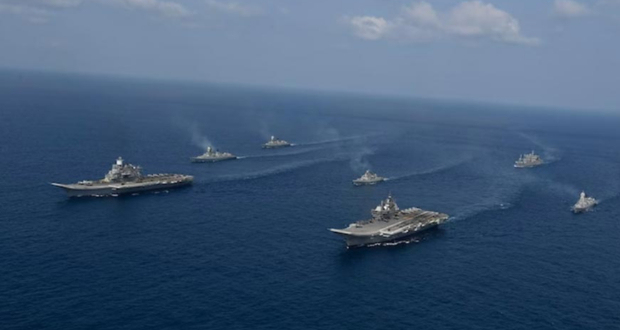The Indian Ocean maritime geography has evolved as a crucial strategic theatre in global geopolitics. A shift in strategic approach appears to be underway among countries which have increasingly identified stakes in this region. Geopolitical and geoeconomic compulsions of various countries continue to guide their strategic outlook towards the Indian Ocean region. A vast maritime expanse, the Indian Ocean is located strategically bordering Africa and West Asia towards its west; Southeast Asia, and Australia on its east; the polar cap of Antarctica on the south; and the Indian subcontinent on its north. Growing maritime traffic due to increasing sea-borne trade and energy and resource security through the evolving notion of blue economy are some variables which have positioned the Indian Ocean as a crucial strategic theatre.
The evolution of the Indo-Pacific concept, as an integrated maritime expanse comprising the Indian and Pacific oceans appears to have been instrumental in enhancing the strategic value of the Indian Ocean.
Moreover, the evolution of the Indo-Pacific concept, as an integrated maritime expanse comprising the Indian and Pacific oceans appears to have been instrumental in enhancing the strategic value of the Indian Ocean. While it is natural for resident players of the Indian Ocean, namely littoral and island countries located in this geography, to place critical emphasis on the region, increasingly several non-resident powers have enhanced their presence in the Indian Ocean as well. This is a result of some crucial factors.
First, the Indo-Pacific as an integrated maritime theatre has prompted various countries that have an active presence in the Pacific to approach the Indian Ocean more strategically. Second, several key geographies jutting out into the Indian Ocean have emerged as critical sites of geostrategic competition between China and other like-minded democratic countries pursuing a rules-based order in the Indo-Pacific. Island countries like Sri Lanka, Maldives, as well as the African littoral states, are a few examples of the same. Third, the Indian Ocean houses several important maritime passages that have become crucial for the free flow of trade, security energy and resource interests of powers in Europe and the West. Fourth, several non-resident powers in the Indian Ocean are actively enhancing their presence in the region by way of bolstering diplomatic and security aid. Notably, an important characteristic of the Indian Ocean geography pertains to significant power and capabilities asymmetry. Aid in the form of assistance to enhance the capabilities of small island countries to secure their interests has emerged as a crucial method of strategic engagement.




